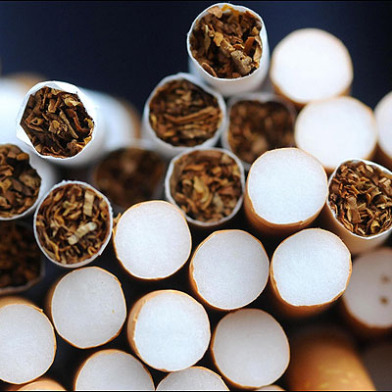 As the number of cigarette smokers in California continues to drop, particularly in urban areas, San Francisco has bucked the trend, according to the latest state figures released today.
As the number of cigarette smokers in California continues to drop, particularly in urban areas, San Francisco has bucked the trend, according to the latest state figures released today.
According to the California Department of Public Health, 13.1 percent of adult Californians were smokers in 2009, down 0.2 percent from 2008. The figure was 26.7 percent in 1985.
California Department of Public Health Director Dr. Mark Horton said today he was “very pleased” with the latest results, and confident that the state would meet a federal goal of 12 percent by 2020.
“We feel California is already well on the way to being able to accomplish that, not only within 10 years, but possibly much sooner than that,” he said.
According to Horton, California ranked second only to Utah in having the lowest percentage of adult smokers.
The state began its Tobacco Control Program in 1990, funding local agencies and community groups in anti-smoking efforts as well as statewide media campaigns and research.
“I am proud of the tremendous progress that California has made during the past 20 years,” said California Health and Human Services Agency Secretary Kimberly Belshe in a statement. “But our job is not yet complete because nearly 4 million Californians still smoke, and tobacco remains the number one cause of preventable death and disease.”
For the first time, the state also released results by county today, though the latest figures were from 2008.
The statistics showed higher smoking rates in rural areas than in urban areas, which Horton called “fairly striking.” Some rural counties topped 20 percent.
“That gives us additional information on where we need to focus our efforts going forward,” he said.
While rural Bay Area counties also had higher smoking rates, San Francisco’s rate was relatively high among urban areas at 13.5 percent, exceeded only by Sacramento at 14 percent. Both counties together constitute 7 percent of the state’s total population.
By contrast, the Bay Area’s two other most urban counties had much lower percentages of smokers. Alameda County’s rate was 10 percent and Santa Clara County’s rate was 8 percent.
Los Angeles County’s rate was 10.4 percent.
Horton said it would be “just speculative at this point” for him to say why San Francisco’s rate remained higher.
Alyonik Hrushow, director of the San Francisco Department of Public Health’s Tobacco Free Project, attributed the higher number to concerted corporate marketing campaigns centered on San Francisco’s club culture.
“People who live in San Francisco have been targeted a lot by the tobacco companies,” Hrushow said, “especially young adults.” She said in 2008 the city banned tobacco companies from giving out free samples at clubs.
The same year, San Francisco banned tobacco sales in pharmacies, a measure that was strengthened this year to include big-box and grocery stores with pharmacies. Also this year, the city passed a tough secondhand smoke ordinance banning smoking in outdoor dining areas, common areas of apartment buildings, and near business doorways, among other locations.
Hrushow said it was unclear whether San Francisco’s smoking rate has gone down since the last tally was done in 2008.
“It’s hard to counter what the tobacco industry does, because they have deep pockets,” Hrushow said. Conversely, she said, state funding for tobacco control efforts has gone down, and the state hasn’t imposed any further cigarette taxes since 1989.
Other statewide data released today revealed higher rates of smokers among those with less education and lower income.
Horton said he was encouraged by an increase in the number of smokers trying to quit.
In 2009, the number was 60 percent overall, and 76 percent among young adults ages 18 to 24.
The California Department of Public Health also unveiled a new anti-tobacco television ad campaign focused on the environmental costs of cigarette smoking.
“We think this will bring in yet another population that may not have been well engaged in the anti-tobacco battle,” Horton said.
According to the department, discarded cigarette butts release toxins such as arsenic and nicotine into the environment. They are the most commonly found item of litter on beaches and roadsides, and a major litter item at parks, the department said.
While California spends more than $41 million each year cleaning up litter, 34 percent of the total litter collected statewide is cigarette butts, according to the department.
“So it’s not just about the impacts on human health–that’s still the major reason (for the campaign) — but it’s also about impacts on the environment,” Horton said.
Ari Burack, Bay City News
Want more news, sent to your inbox every day? Then how about subscribing to our email newsletter? Here’s why we think you should. Come on, give it a try.









